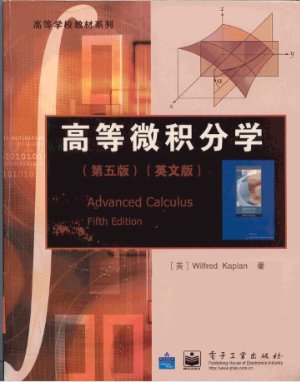Addison Wesley, 2002. - 736 pages.
The Fifth Edition of this leading text offers substantial training in vectors and matrices, vector analysis, and partial differential equations. Vectors are introduced at the outset and serve at many points to indicate geometrical and physical significance of mathematical relations. Numerical methods are touched upon at various points, because of their practical value and the insights they give about theory.
The background assumed is that usually obtained in the freshman-sophomore calculus sequence. Linear algebra is not assumed to be known but is developed in the first chapter. Subjects discussed include all the topics usually found in texts on advanced calculus. However, there is more than the usual emphasis on applications and on physical motivation. Vectors are introduced at the outset and serve at many points to indicate geometrical and physical significance of mathematical relations.
Numerical methods are touched upon at various points, both because of their practical value and because of the insights they give into the theory. A sound level of rigor is maintained throughout. Definitions are clearly labeled as such and all important results are formulated as theorems. A few of the finer points of real variable theory are treated at the ends of Chapters 2, 4, and
6. A large number of problems (with answers) are distributed throughout the text. These include simple exercises as well as complex ones planned to stimulate critical reading. Some-points of the theory are relegated to the problems, with hints given where appropriate. Generous references to the literature are given, and each chapter concludes with a list of books for supplementary reading. Starred sections are less essential in a first course.
The Fifth Edition of this leading text offers substantial training in vectors and matrices, vector analysis, and partial differential equations. Vectors are introduced at the outset and serve at many points to indicate geometrical and physical significance of mathematical relations. Numerical methods are touched upon at various points, because of their practical value and the insights they give about theory.
The background assumed is that usually obtained in the freshman-sophomore calculus sequence. Linear algebra is not assumed to be known but is developed in the first chapter. Subjects discussed include all the topics usually found in texts on advanced calculus. However, there is more than the usual emphasis on applications and on physical motivation. Vectors are introduced at the outset and serve at many points to indicate geometrical and physical significance of mathematical relations.
Numerical methods are touched upon at various points, both because of their practical value and because of the insights they give into the theory. A sound level of rigor is maintained throughout. Definitions are clearly labeled as such and all important results are formulated as theorems. A few of the finer points of real variable theory are treated at the ends of Chapters 2, 4, and
6. A large number of problems (with answers) are distributed throughout the text. These include simple exercises as well as complex ones planned to stimulate critical reading. Some-points of the theory are relegated to the problems, with hints given where appropriate. Generous references to the literature are given, and each chapter concludes with a list of books for supplementary reading. Starred sections are less essential in a first course.

